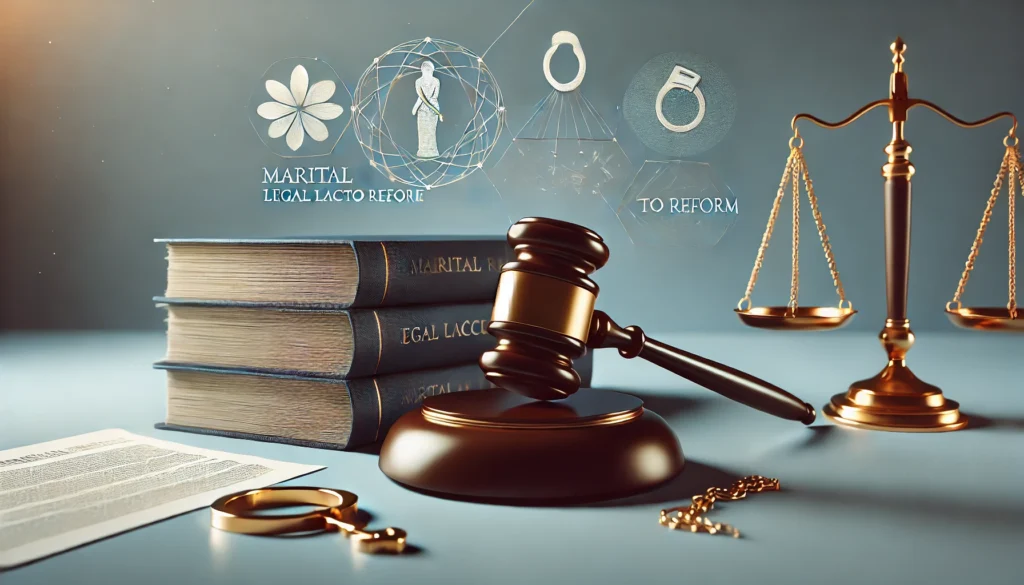Published On: 3rd February, 2024
INTRODUCTION
Life, inherently valuable and irreplaceable, is the cherished aspiration of every individual. However, life’s journey is marked by inevitable challenges, akin to thorns in a bed of roses. Mortality is an inescapable reality, and individuals often face hardships that may lead to a desire to end one’s life unnaturally, commonly known as suicide. Yet, there are situations where the quality of life deteriorates to an extent that it becomes unbearable. In such cases, the concept of euthanasia emerges.
It is crucial to distinguish between suicide and euthanasia, as they are ethically controversial issues. Suicide involves intentionally taking one’s own life, whereas euthanasia, also known as mercy killing, is performed based on medical reasons. In suicide, the act is self-inflicted, whereas euthanasia involves another person facilitating the death. Suicide is often impulsive and abrupt, while euthanasia is a more deliberate and considered decision. Importantly, euthanasia applies to both humans and animals, while suicide is exclusive to humans and is voluntary, unlike euthanasia, which can be both voluntary and non-voluntary.
Euthanasia has remained a contentious and debated issue worldwide, involving the deliberate termination of human life. Debates have ensued not only within legal frameworks but also among intellectuals and academicians. Two pivotal paradigms have shaped discussions on euthanasia—sanctity of life, emphasizing the impermissibility of ending it, and autonomy, asserting individuals’ right to end their lives when in misery.
The intersection of medical advancements and societal values has brought forth challenges and discussions around human rights, autonomy, and freedom of choice. Palliative care and quality of life issues for patients with terminal illnesses, such as cancer and AIDS, have gained prominence. Mental health concerns, particularly the desire for death and physician-assisted suicide (PAS), have become crucial topics. The desire for death is a complex construct ranging from suicidal intent to a mere absence of the desire to live.
Advocates for patient autonomy regarding end-of-life decisions have gained momentum, yet the intricate interplay of medical, social, and psychological factors, including depression, is often overlooked. In the pursuit of autonomy, the ethical dimensions of euthanasia continue to shape legal discourse and medical ethics, reflecting a nuanced balance between compassion and the sanctity of life.
MEANING
Sir Francis Bacon, an English philosopher, is attributed with coining the term “euthanasia” in the 17th century to denote a painless and pleasant death[1]. Originating from the Greek words “eu,” meaning “good,” and “thanatos,” meaning “death,” euthanasia initially conveyed the idea of a “good” or “easy” death. Euthanasia is characterized as the administration of a lethal agent by one person to relieve the patient’s unbearable and incurable suffering, typically motivated by mercy. Oxford Dictionary defines euthanasia as “the painless killing of a patient suffering from an incurable and painful disease or in an irreversible coma[2].
Euthanasia is categorized into “active” and “passive.” Active euthanasia involves a deliberate action by a physician to end a patient’s life, while passive euthanasia entails withholding or withdrawing treatment essential for life maintenance. Voluntary euthanasia is at the patient’s request, involuntary euthanasia is performed without the patient’s request to alleviate pain, and non-voluntary euthanasia occurs when the patient cannot provide consent.
Physician-Assisted Suicide (PAS), a related concept, entails a physician providing medications or guidance for the patient to end their own life[3]. Despite subtle theoretical and ethical distinctions between euthanasia and PAS, practical distinctions arise, as many terminally ill patients with access to lethal medications opt not to terminate their lives. Legally and ethically, euthanasia and PAS are distinguished from the administration of high-dose pain medication, where the intent is to alleviate suffering rather than end life. The withdrawal of life support is also set apart, with patients retaining the right to refuse unwanted treatment, even if it leads to death.
Euthanasia, encapsulating the notion of a “good death,” is deeply rooted in the desire for a less painful demise, particularly in cases of incurable diseases causing prolonged suffering. The classifications of euthanasia comprise active or positive euthanasia, passive or negative euthanasia, voluntary euthanasia, non-voluntary euthanasia, and involuntary euthanasia. The definitions and classifications underscore the intricacies surrounding the ethical and legal considerations of euthanasia, reflecting the delicate equilibrium between relieving suffering and honoring the sanctity of life.
HISTORICAL CONTEXT
Euthanasia, tracing its origins to ancient Greece and Rome in the fifth century B.C., has a rich historical journey. In ancient Greece, thinkers like Socrates embraced euthanasia as a concept that alleviated fear of death. However, objections arose with the Hippocratic Oath, which physicians swore to uphold, despite some doctors continuing to provide relief by ending patients’ lives.
During the Middle Ages, euthanasia became taboo in Europe due to Christian teachings that deemed death to be determined by God. The human body was considered a sacred temple, making its destruction sinful. In the 15th-17th century, Thomas More recommended euthanasia in his work “Utopia,” stressing the need for patient consent. Legal aspects surfaced in the 18th century, with Russia reducing penalties for those ending the lives of incurably ill patients.
Despite advocacy in the 17th and 18th centuries, euthanasia faced rejection, but it gained renewed support in the late 1930s. The movement for legalization began in 1935, culminating in the founding of the Voluntary Euthanasia Legalization Society. However, World War 2 atrocities associated with euthanasia led to a decline in its popularity in the United States.
Actual momentum for euthanasia legalization emerged in the late 20th and early 21st centuries, with Oregon becoming the first U.S. state to allow it in 1998. The Netherlands and Belgium were the first countries to legalize euthanasia in 2002.
Ancient Indian philosophical traditions also acknowledged the concept of voluntary death, citing instances from Mahabharata and the Manu smriti. Hindu perspectives on euthanasia vary, with some viewing it as fulfilling moral obligations by ending prolonged suffering, while others see it as disrupting the natural cycle of death and rebirth. The Roman Catholic Church and Christians generally oppose euthanasia, considering it morally wrong, while Muslims and Sikhs largely disapprove due to religious beliefs in the sanctity of life. Buddhists exhibit varied views, with many opposing involuntary euthanasia, and their stance on voluntary euthanasia remains ambiguous. Overall, religious perspectives often emphasize the sanctity of life, leading to disapproval of euthanasia.
WESTERN VIEW
Across history, the euthanasia movement experienced periods of heightened momentum, nearly securing legal recognition only to face defeat in legislative arenas. Following the Nazi holocaust, the movement encountered a substantial setback. Post-war, the focus shifted from addressing euthanasia issues through moral or political lenses to seeking scientific and technological solutions. Different nations adopted diverse approaches to euthanasia, forming an eclectic pattern that warrants exploration.
Netherlands: the Netherlands holds the distinction of being the pioneer in legalizing both euthanasia and assisted suicide. The legal deliberations gained momentum after the “Posthma Case,” where a physician facilitated her mother’s death through a lethal injection[4]. Responding to this, the legislature enacted the “Termination of Life on Request and Assisted Suicide (Review Procedures) Act” in 2002. This act articulates due care criteria, specifying conditions under which euthanasia and assisted suicide remain unpunished. Notably, a medical review board has the authority to suspend the prosecution of doctors if specific conditions are satisfied.
France: In France, the practice of palliative sedation, involving sedating a person with their consent to the point of life termination, is legally permissible. However, a significant development in 2021 witnessed the French Parliament rejecting a bill related to the legalization of euthanasia[5].
Australia: Australia’s Northern Territory took a stride toward euthanasia legalization in 1996, permitting physician-assisted suicide and active voluntary euthanasia under specific circumstances[6]. However, voluntary euthanasia remains illegal throughout the country, with patients having the right to refuse treatment.
Switzerland: Switzerland stands out as the sole country recognizing the “right to die”[7]. Suicide is not deemed a criminal offense, and assisted suicide is lawful, even when conducted by non-physicians, provided it is not motivated by selfish reasons. However, active euthanasia remains proscribed.
United States: In the United States, active euthanasia remains proscribed, yet the landscape is nuanced. Initiatives toward euthanasia began in the 1930s, achieving limited success. The passing of the Death with Dignity Act in Washington in 2008 allowed physician-assisted euthanasia. Court decisions have played a pivotal role in shaping the acceptance and legality of euthanasia, creating a complex legal milieu. The U.S. Supreme Court made euthanasia completely illegal in Vacco v. Quill and Washington v. Glucksberg[8]. In 2009, the Montana Supreme Court found no constitutional prohibition on physician-assisted suicide in Baxter v. Montana. In 2006, the U.S. Supreme Court ruled that prosecuting physicians for facilitating assisted suicide in Oregon was unconstitutional[9].
Belgium: Belgium followed the path of the Netherlands, legalizing voluntary euthanasia and doctor-assisted suicide in 2002. The conditions for euthanasia include the patient being incurably ill, making voluntary and informed requests, and being legally competent[10]. The law incorporates waiting periods and reporting mechanisms. However, criticism has been directed at the absence of preventive regulatory measures, as post facto reviews dominate the legal landscape.
United Kingdom: Active euthanasia is forbidden in the United Kingdom. The House of Lords decision in Airedale NHS Trust v. Bland[11] set a precedent for facilitating euthanasia in cases of Permanent Vegetative State (PVS). The court’s endorsement of the withdrawal of life-sustaining treatment and the formulation of guidelines significantly influenced the legal landscape.
Canada: Physician-assisted suicide is unlawful in Canada under Section 241(b) of the Criminal Code. While patients can refuse life support, they lack the right to demand euthanasia or assisted suicide. Legal precedents, such as the Sue Rodriguez case[12], underscore the primacy of the state’s interest over individual autonomy in assisted suicide cases.
CURRENT LEGAL FRAMEWORK IN INDIA
The concept of euthanasia and its legal standing in India has been a subject of judicial scrutiny and debate. The right to life, a fundamental human right enshrined in Article 21 of the Indian Constitution, has sparked discussions about whether it includes the right to die with dignity. Different court cases have presented varying perspectives on this matter. The legal perspective on euthanasia in India has established a distinction between passive and active euthanasia.
Initially, even passive euthanasia was deemed illegal, and doctors involved were subject to criminal charges under Section 300 of the Indian Penal Code (IPC). Exception 5 of Section 300 applied to cases of voluntary euthanasia, where valid consent was present, leading to culpable homicide charges under Section 304. However, this legal stance pertained only to voluntary euthanasia cases where the patient consented and was above 18 years. Non-voluntary and involuntary euthanasia were not covered, as they fell under the proviso of Section 92 of the IPC. Active euthanasia remains a criminal offense in India[13].
In the case of Maruti Shripati Dubal v. State of Maharashtra[14], the Bombay High Court took the stance that the negative aspect of the fundamental right to life includes the right to die. This led to the invalidation of Section 309 of the Indian Penal Code (IPC) as unconstitutional, considering it a violation of Articles 14 and 21.
However, in Chenna Jagadeeshwar & Anr. v. State of Andhra Pradesh[15], a different view emerged, asserting that Article 21 of the Constitution does not encompass the right to die. P. Rathinam v. Union of India[16] echoed the stance of Maruti Shripati Dubal, stating that the right to life indeed includes the right to die, while deeming Section 309 of the IPC as irrational and cruel, urging its removal.
The case of Gian Kaur v. State of Punjab[17] further challenged the constitutional validity of Section 309 of the IPC. The Supreme Court upheld the section, declaring that the right to die is unconstitutional. The court emphasized the distinction between natural and unnatural extinction of life, maintaining that the right to die with dignity at the end of natural life should not be confused with the right to die an unnatural death.
Naresh Marotrao Sakhre v. Union of India[18] reiterated the viewpoint that euthanasia is considered a homicide, regardless of the circumstances.
The issue of euthanasia gained prominence in the Aruna Ramachandra Shanbaug v. Union of India case[19], where passive euthanasia was legalized. The Supreme Court laid down guidelines, emphasizing that the decision to discontinue life support should be made by close relatives or, in their absence, the treating doctor, with the best interest of the patient in mind. The court recommended decriminalizing attempted suicide and provided guidelines for High Court involvement in cases of euthanasia.
The Law Commission recommended euthanasia legalization in its 241st Report. In the case of Common Cause (A Regd. Society) vs. Union of India[20], passive euthanasia was legalized, affirming the ‘right to die with dignity’ as a fundamental right. The court recognized passive euthanasia, where a doctor refrains from saving the patient, and distinguished it from active euthanasia, involving administering lethal substances.
Despite these developments, Sections 306 and 309 of the IPC continue to pose legal challenges to euthanasia in India. The courts have reviewed these sections in connection with Article 21 of the Constitution, which guarantees the right to life, autonomy, privacy, and self-determination. This legal evolution reflects the ongoing debate on euthanasia in India, considering ethical, moral, and constitutional dimensions. The recognition of the ‘right to die with dignity’ in specific contexts signifies a nuanced approach to end-of-life decisions.
CONCLUSION
Countries like India are gradually recognizing euthanasia, especially passive voluntary euthanasia, as seen in cases such as Gian Kaur and Aruna Shanbaug. The Supreme Court’s recent decision to legalize passive voluntary euthanasia is applauded. However, active euthanasia remains prohibited, aligning with the global trend. While the medical community acknowledges the necessity of euthanasia in certain cases, caution is urged. Health-related challenges are on the rise due to factors like pollution and climate change, increasing the number of terminally ill patients.
Despite the Supreme Court’s guidelines, concerns persist, including issues with minors and access to palliative care. The potential misuse of euthanasia is a significant concern requiring parliamentary attention. Implementing effective legal frameworks poses challenges. India is taking progressive steps toward legalizing euthanasia, emphasizing the need for laws aligned with the nation’s culture and philosophy, considering the role of religion, and prioritizing sensibility.
Reference(s):
[1] https://www.brillopedia.net/post/euthanasia
[2] 1 https://www.oxfordreference.com/view/10.1093/acref/9780198609810.001.0001/acref-9780198609810-e2515
[3] https://www.ncbi.nlm.nih.gov/pmc/articles/PMC3701348/
[4] https://www.ncbi.nlm.nih.gov/pmc/articles/PMC3070710/
[5]https://www.france24.com/en/france/20210408-bill-to-legalise-euthanasia-goes-before-divided-french-parliament
[6] https://humanrights.gov.au/our-work/age-discrimination/publications/euthanasia-human-rights-and-law
[7] Article 115 of the Swiss Penal Code
[8] https://www.cga.ct.gov/PS97/rpt/olr/htm/97-R-1055.htm#:~:text=Glucksberg%20(65%20LW%204669)%20and,(June%2024%2C%201997)).&text=In%20these%20two%20cases%20the,York%20laws%20prohibiting%20assisted%20suicide.
[9] https://www.gfrlaw.com/what-we-do/insights/supreme-court-finds-no-constitutional-right-physician-assisted-dying
[10] The Belgian Act on Euthanasia of May, 28th 2002
[11] [1993] 1 All ER 821
[12] (1993) 3 SCR 519
[13] https://www.scconline.com/blog/post/2021/07/31/revisiting-exception-5-to-section-300/
[14] BomCR 499 (1986) BOMLR 589
[15] AIR 1988 Cr LJ 549
[16] AIR 1994 (3) SCC 394
[17] AIR 1996 (2) SCC 648
[18] 1996 (1) BomCR 92
[19] (2011) 4 SCC 454
[20] MANU/SC/0232/2018




